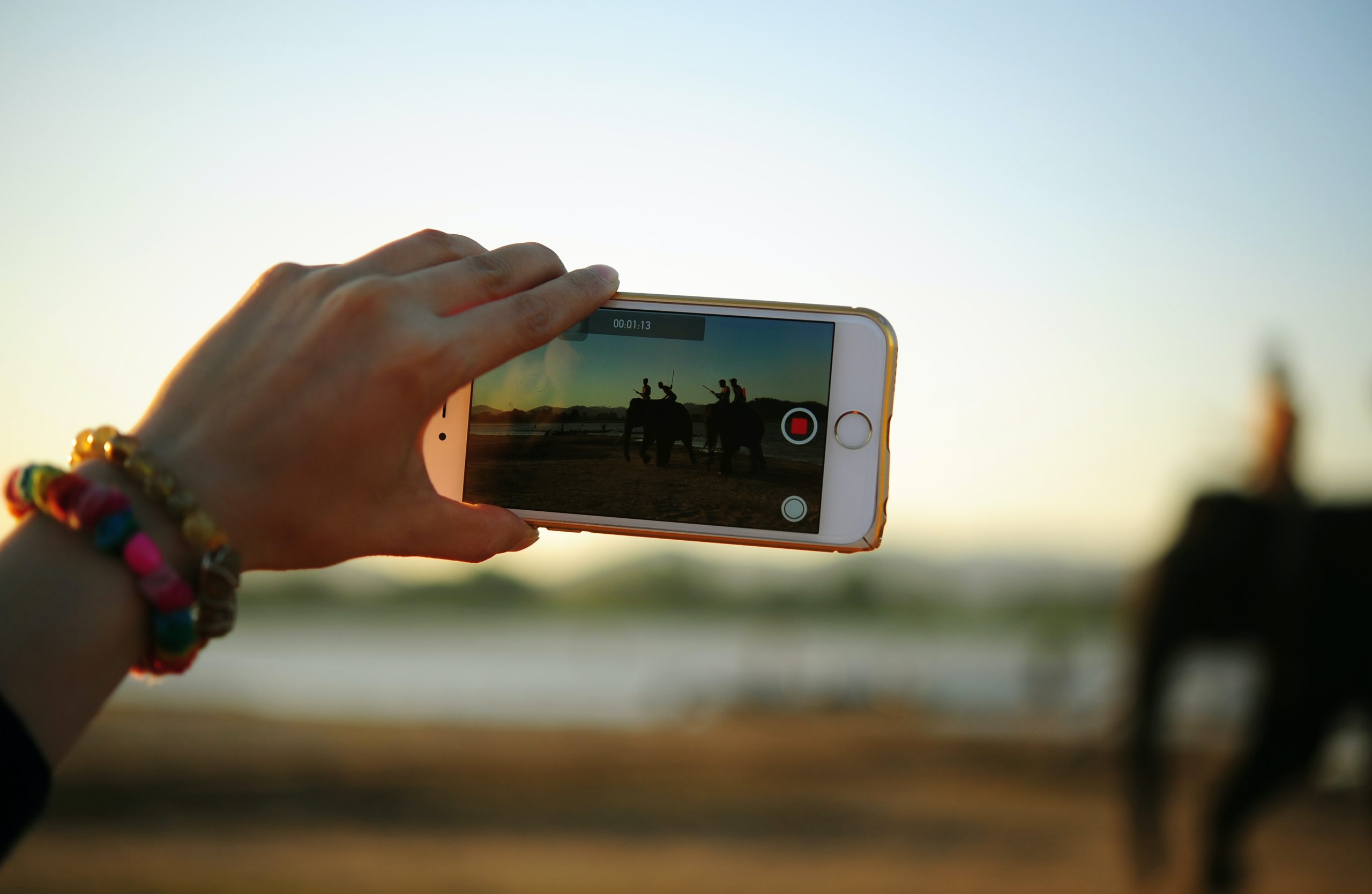
Repurposing content marketing is something we talk about a lot but rarely follow through with.
We know we should repurpose because all the major brands tell us we have too. Marketing influencers on Twitter and LinkedIn preach their success.
But, we just don’t have the time or budget to turn every blog post into a podcast or an infographic. Sound familiar?
These are the thoughts of most small marketing teams.
Perhaps you’re a solopreneur getting started with content marketing. Or you might be a small team at a startup with little budget for anything other than blog posts.
The good news? It’s fine.
This blog post will walk through all the different ways you can repurpose content without spending a fortune on equipment, software, and people. Before we dig into how, it’s important to understand why.
What is content repurposing?
Content repurposing is the process of taking an existing piece of content and making something else from it.
You could repurpose all of the content or choose to use specific elements in a new medium. This tactic is popular with brands that have large content marketing teams with varied skill sets.
The more skills and resources you have, the more mediums you have available to repurpose your content. For example, you might have a successful blog post that you could turn into a podcast episode.
Or vice versa. There is no limit to repurposing content and no hard and fast rules. One thing that is certain is you should be doing it.
Why you should repurpose content?
Each piece of content you create should have a defined purpose and a target audience. By repurposing content, you can expand the reach of your content.
For example, a podcast episode may be listened to by hundreds of people. But, by creating a blog post on the same topic, you could expand your reach to thousands of searchers on Google who might not like listening to podcasts.
Repurposing content expands your content calendar by as many pieces of content you repurpose too without needing to think of new ideas and topics. If you’re struggling for ideas for your content strategy, repurposing existing content relieves the burden of having to drum up new briefs for writers or create content that doesn’t fit your strategy.
Furthermore, when you change the medium of your content, you can express points in different ways that become clearer to your audience. You may mention a topic in a blog post that you’re passionate about but not want to get carried away writing as you know your blog readers skim your site.
In video format, where you know YouTube viewers are likely to watch the entire video, you can show your passion and expertise by really digging into a subject. The more formats your content exists in, the wider your audience and the larger the opportunity to showcase thought leadership and subject matter expertise.
How do you repurpose content marketing?
There is an infinite amount of ways to repurpose content marketing. Think about the content you consume on a daily basis.
You could repurpose your existing content to quite literally any of these. Let’s use a blog post as the base for repurposing. There are 2.75 million posts published each day on WordPress alone so it’s a natural starting point.
Repurposing blog posts is a personal favourite of mine. As a writer, I was always of the mindset that my job was to write and someone else would make something else to accompany it. The reality is that a blog post isn’t complete until you’ve repurposed it at least once.
Here are three easy ideas for you to try:

1 – Create an infographic or killer image
Using images should be part and parcel of your blog post creation process anyway. They’re great for SEO, they break up chunks of text, and they help you be found on Google Images.
By going the extra mile and creating your own images, you own unique content that other people are likely to reference or reuse. This makes it easier for the reader to digest important information but also creates an asset that the reader can use (and link to) for their own content.
Once you’ve created your infographic, you can also share this as a standalone piece of content on sites specific for image sharing (like Pinterest, Flickr, or Visaul.ly). This expands your audience to the nth degree. Regular readers may not be searching these sites. But, you leverage a new audience who also wouldn’t find you.
2 – Record a podcast about your blog topic
If you’ve written a blog post that people read and engage with, the chances are they will listen to the same topic as well. For some, podcasting is the preferred method of content consumption.
In fact, in 2021, a larger percentage of American consumers listened to podcasts weekly than attended church or religious services weekly: 24% to 23%. 68 million Americans are weekly podcast listeners.
So, you know you should record a podcast. But, how do you get started?
It sounds like you need a recording studio and a high budget. It sounds daunting. But, the reality is quite different. You can start a podcast from home without any experience.
You will need some software (to record and edit) and you’ll need to learn how to use a publishing platform. (I’d recommend Transistor).
If you’re familiar with publishing blog posts on platforms like WordPress, Squarespace, or Ghost then Transistor will be simple to use and it does all the Apple and Spotify work for you.
Hardware-wise, do invest a small amount in a good quality microphone. It will be better than using the headset you use for calls. For this, try out the Yeti range. They don’t break the bank and do give you a professional edge.
When you’ve recorded and edited your episode(s), share them as you would a blog post with your audience. Also, embed them in the blog post so readers have the option of listening instead of reading. This increases time on page and offers the reader a choice of experience.

3 – Make a video relating to your blog post
This isn’t going to be a section on “how you must use video marketing” because you don’t have to do video marketing.
Sure, in the majority of cases, people watch videos for longer than they read a blog post. But, you need to make sure your video is relevant to your audience and worth talking about. If you’re camera-shy, that’s fine too.
You don’t need to be in the video!
Making video content without being in the video
For the Mio blog, I embed our “marketing video” into any post that mentions our product.
This helps the reader understand exactly what the product is. So, if I haven’t done a good enough job in the copy, the video acts as alternative education material.
When you have created your video, do upload it to YouTube or Vimeo so people can find it naturally. But, don’t rely on the platforms. At the time of writing, this specific has 12.5k views. Every single view can from being clicked within a blog post.
Making video content and being in the video
If the topic is worthy of it, do create a video talking about your blog post. For topics that could do with more explaining or you can get passionate about, create a video.
It doesn’t have to be 10 minutes long and perfectly edited.
Don’t forget: you’re repurposing content, not creating new content.
So, you already have accompanying content. In the video description, leave a link to the original content so the viewer can reference back to what you’ve presented.
Ideally, your video could be short and sweet and used as a preview of your blog post. In essence, you’re extending your content marketing funnel:
- Video promotes social post
- Social post promotes content
- Content promotes landing page
- Landing page promotes install, demo, etc
How do I repurpose video content?
You can do the same vice versa. If you’re a video marketer, you could create a blog post for every video you make. It might be as simple as a transcription.
You could use an interview Q&A format. Or it could be a full-blown blog post on the topic. Outside of blogging about your video content, you can take snippets of the video for a highlight reel, a teaser video, a compilation, or for social media posts. Get creative and turn short snippets into GIFs. You can then use these… everywhere!
How do you repurpose content on social media?
One quick win for repurposing content is to extract the best bits from your blog post and turn them into social media posts.
You can literally copy and paste a quote or paragraph from your blog post and use this to entice your followers to click and read the whole blog post.
A better tactic is to change up the formatting. Use bullets (or emojis as bullets) to give a clear picture of what to expect from the blog post.
Remember the custom images or infographics you’re making from the section above? Share these as standalone posts with a link to the full post too.
If you’ve conducted independent research, share the graphs and raw findings as a preview of what to expect when the reader clicks on your post.
How do you repurpose other people’s content?
Repurposing content from other sources and people is a sensitive area. If you want to include something created or said by an influencer or expert in your domain, it’s always best practice to get their permission.
Over time, you might form a relationship with these connections and quote them with a byline. In general, everyone wants their work to be shared so you’re only doing them a favour.
Just make sure you credit them accordingly. To do this:
- Hyperlink to the original source of the content
- Add a byline with who created the content
- Tag the creator on social media when you share
- Email the creator when you publish
Content repurposing examples
A personal example of repurposing content is an infographic from 2019 that became a podcast series and an entire brand.
Thanks to the success of the infographic, I knew people would be willing to come on the podcast and demonstrate their expertise. The stats reported from the infographic also suggested this was a topic worth pursuing.
See if you can find your equivalent of this in your content.
Another great example is that of Hypercontext. Hiba Amin, Content Marketing Manager, told me they repurpose most of their agenda templates and create blogs about them.
In turn, they become listicle template posts … Double repurposing!
Sean Blanda, Director of Content at Crossbeam, also shares a great example of content they repurposed. This blog post about the discovery phase is a 700+ word blog post that is an excerpt from The Partner Playbook. It’s a literal book repurposed as a blog post!
Content repurposing services
When you start repurposing content, and have the luxury of a budget, consider hiring a specialist in the type of content you wish to repurpose.
If you want to repurpose a video or podcast (or anything) to a blog post, here’s a list of talented freelance writers collated by John Bonini, Marketing Director at Databox.
PR Fire offers content repurposing services for teams who genuinely don’t have the time or resources to repurpose in-house. If you plan to scale your content repurposing, you might prefer a service that has many specialists so you don’t have to find a freelance for each type of content.
Whether you’ve got a standout piece of content to repurpose or want to start working your way through your existing blog posts, contact the PR Fire team today to get started.

